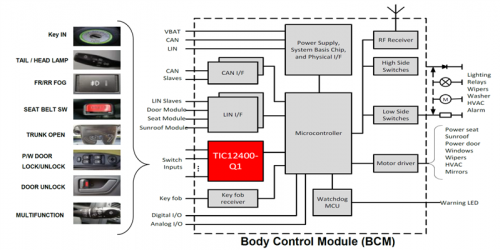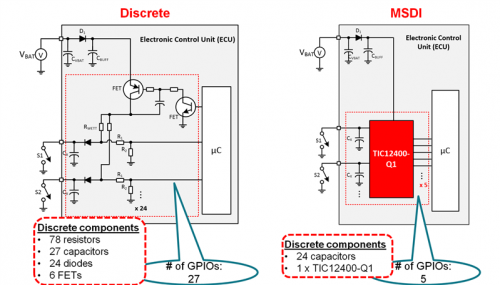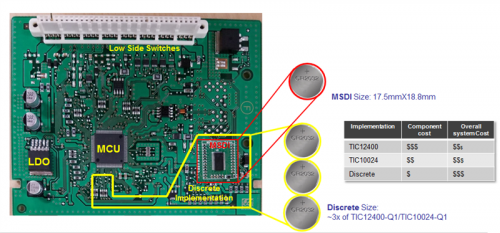Automotive Electronics is implementing more and more functions (safety, driver assistance, providing more information to drivers) and the demand for quality electronics continues to grow rapidly. As capabilities related to comfort, safety, equipment, and custom driving experience become more sophisticated, the demands on the vehicle's electronic systems have been harsher. The body control module (BCM) coordinates different functions in the vehicle by signals. They manage numerous vehicle functions including door locks, alarm sound control, interior and exterior lighting, safety features, wiper blades, steering indicators and power management. BCM, which is tied to the vehicle's electronic architecture, maximizes reliability and economy while reducing the number of plug-in connections and cable harnesses required.
As the demand for increased BCM functionality continues to grow, the number of cable harnesses required is also on the rise. For example, according to Kiyotsugu Oba in his article "Harnessing a New Generation of Vehicles," the total weight of conventional wire harnesses currently used for compact cars is about 30 kg / car. By comparison, the total weight of a car's wiring harness in the 1970s was only a few kilos. BCMs play a decisive role in cost because they reduce the amount of wiring in a vehicle by providing an interface to the bus system. About 80% of the product budget is in the bill of materials (BOM) phase, that is, early development phase decision.
The current BCM market trends
Market trend is centralized. Compared with the decentralized structure, the centralized structure has fewer modules and more functions. The advantages of a centralized structure include simpler network connections, greater cost-effectiveness, and an optimized number of electronic control units (ECUs) to reduce harness weight. Weight loss reduces manufacturing costs and increases fuel efficiency, which is a win-win solution for carmakers and car owners alike.
However, in view of this trend, today's centralized architecture is causing the I / O ports of microcontrollers (MCUs) to run out to connect the switches and sensors in automotive electronics. The complex design requires 60-120 switches to be connected to the central BCM. One way to solve this problem is to add more discrete components to enable more I / O. Unfortunately, because circuit board design now requires more components, doing so only translates into reduced electrical costs associated with reduced wiring costs.
Is there any other way to solve this problem?
One option is to use an integrated multi-switch detection interface solution such as TI's TIC12400-Q1 or TIC10024-Q1 devices. These devices are part of the Advanced Contact Monitor family and are also known as Multi-Switch Detector Interface (MSDI) products that detect the closing and opening of 24 to 56 switch contacts (Figure 1).

Figure 1: The BCM is implemented with the TIC12400-Q1
The MSDI device uses an integrated analog-to-digital converter (ADC) / comparator to detect the status of the external switch and to report the switch status to the MCU after detection. The main difference between the TIC10024-Q1 and the TIC12400-Q1 is that the TIC12400-Q1 has a switch matrix poll function and an integrated ADC, which means it handles both analog and multi-threshold inputs. All of these capabilities not only save system costs, but also provide design flexibility to make BCM customizable, which will be a decisive market advantage.
Save material costs and reduce board size
Devices like the TIC10024-Q1 and TIC12400-Q1 can reduce 120 discrete components; see Figure 2.

Figure 2: Comparison of TIC12400-Q1 with discrete solutions
The TIC10024-Q1 and TIC12400-Q1 devices also include integrated electrostatic discharge (ESD) protection (± 8kV), Harvatek battery reverse protection, and transient pulse protection. Eliminating external protection components further reduces material costs and board size. Reduced hardware and software complexity also helps improve reliability, while scalability enables us to make it available on low-, mid- and high-end platforms (see Figure 3).

Figure 3: Comparison of discrete solutions with MSDI devices
The smart features of MSDI devices enable integration of functions that perfectly align with current BCM trends and help integrate the right electronic devices without excessive overhead.





